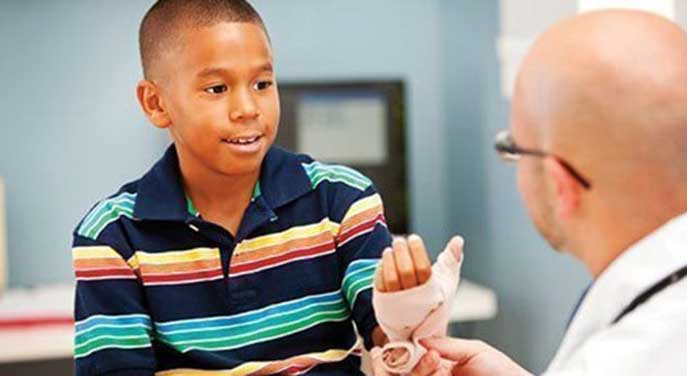Pediatric researchers are calling for more rigorous research into the possible link between short-term opioid use for pain management in childhood and opioid use disorder later in life.
The University of Alberta team reviewed the results of 21 previous studies but found no definitive answer to the question, according to a new study published this week in the journal of the American Academy of Pediatrics.
“Parents see stories about overdoses in the news and are afraid for their children, while physicians and prescribers are also worried because they don’t know what the evidence is,” said senior author Michele Dyson, assistant professor of pediatrics in the Faculty of Medicine and Dentistry and associate director of the Alberta Research Centre for Health Evidence.
“Health-care providers don’t want to cause harm, and at the same time, they still want to be able to treat pain appropriately.”
The ongoing opioid crisis takes four lives per day in Alberta alone.
Although one of the studies reviewed by researchers did show a potential link between short-term exposure and later abuse, Dyson said, most of the study results were not definitive because they did not specify the duration of exposure or did not have a control group.
“We actually didn’t find a lot of evidence to directly answer our question,” Dyson said.
Until further research is done, Dyson recommended continued cautious use of opioids for children.
“If opioids are used as indicated, they can be a safe and effective strategy for pain management,” she said. “In some cases, they really are part of the best treatment plan to manage a child’s pain.”
Opioids are typically prescribed to children for 14 days or fewer for moderate to severe pain from fractures or surgery when other forms of treatment have proven insufficient.
Dyson said that untreated or under-treated pain causes unnecessary suffering and can lead to chronic pain, anxiety, and future avoidance of health care.
“While we can’t say for sure that a short-term prescription for pain is linked with misuse, there is some evidence that that could happen,” she explained. “There is likely some risk, but it needs to be balanced with the harms of stigmatizing opioid use and under-treating pain, which comes with its own significant short- and long-term consequences.”
Dyson encouraged parents to work with their child’s health-care team to create a treatment plan that includes psychological support (such as distraction), physical pain treatments (such as physiotherapy, splints, ice or heat) and non-opioid pain medications like Tylenol or Advil.
She recommended open conversations between children, parents and physicians about using opioids safely – storing them properly, never sharing with others and following dosage directions.
“If your child’s pain isn’t managed, then it’s essential to go back to the clinician rather than make potentially dangerous decisions like just increasing the dosage on your own,” she said.
The research was funded by Alberta Health Services’ Emergency Strategic Clinical Network and Maternal Newborn Child & Youth Strategic Clinical Network Health Outcomes Improvement Fund. The research team included input from the U of A’s Pediatric Parents’ Advisory Group. Dyson is a member of the Women and Children’s Health Research Institute.
The team has developed infographics about opioids for physicians, parents and youth, available from the Translating Emergency Knowledge for Kids (TREKK) website.
| By Gillian Rutherford
Submitted by the University of Alberta’s Folio online magazine. The University of Alberta is a Troy Media Editorial Content Provider Partner.
© Troy Media
Troy Media is an editorial content provider to media outlets and its own hosted community news outlets across Canada.



